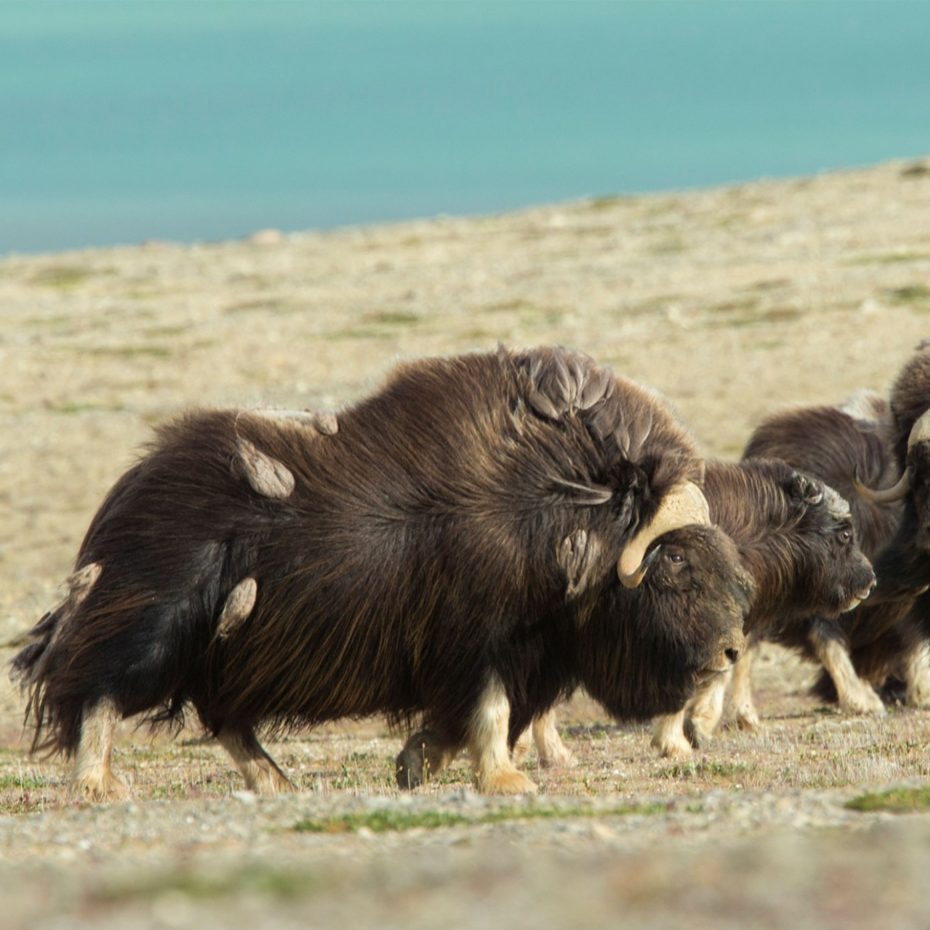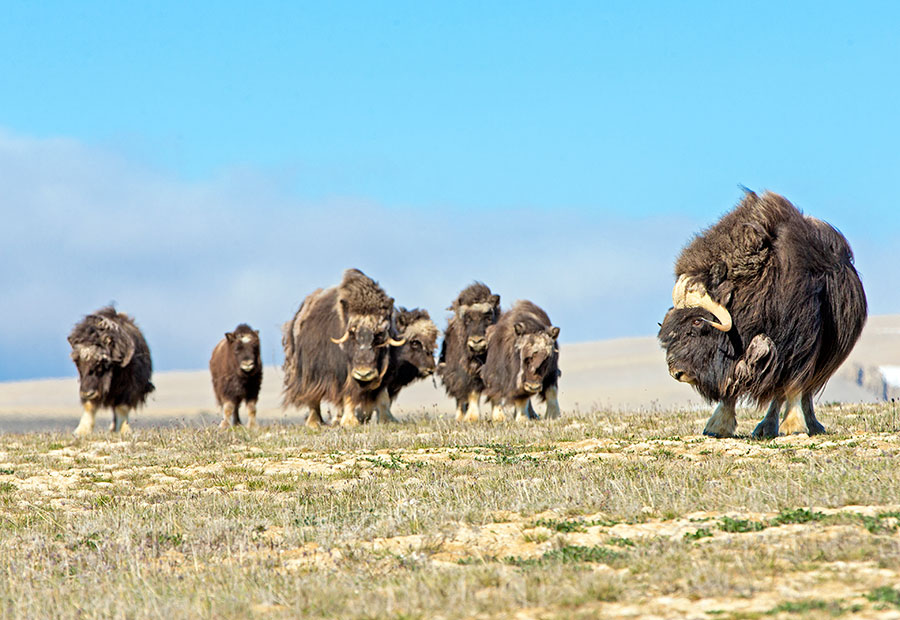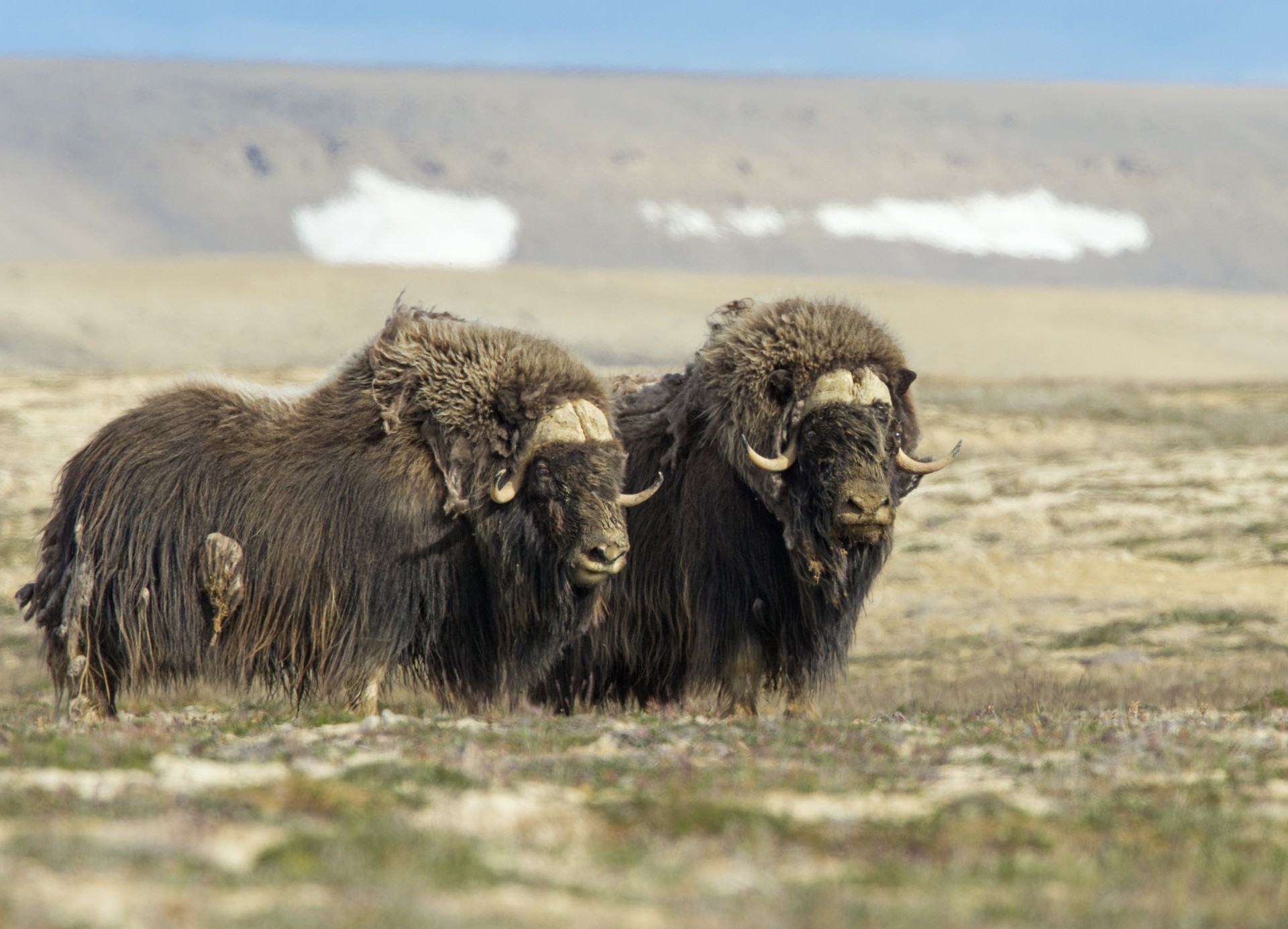MUSKOX & CLIMATE CHANGE
Arctic Watch

Arctic Watch
July 01, 2018 | Arctic Watch
Climate change isn't only affecting polar bears in the Arctic. Muskoxen depend on cold, dry winters in the Arctic to survive.

For many returning from a week at Arctic Watch, the word muskox is likely met with blank stares among friends and family. While some may have heard of the animal, they often don’t have any idea what this prehistoric mammal might look like. Visually, a muskox is the smaller and shaggier cousin to the bison. Highly specialized with their long shaggy hair and insulating undercoat, muskoxen are designed to live in the Arctic environment. One of the largest arctic land mammals, the muskox weighs in at an average of 360lbs whereas the bison can weigh upwards of 2000lbs. Despite the visual similarities, the muskox is taxonomically unique as one of the few remaining prehistoric species that continue to roam the land today. Inhabiting the Arctic for many thousands of years, muskoxen are native to Canada and Northern Greenland, and now inhabit a circum-Arctic distribution after having been introduced to other Arctic regions.

Subsisting off a diet of sedges, grasses, and arctic willow during the summer’s short growing season, muskoxen survive through the harsh winter months by uncovering moss and lichen under the snow. However, with recent changes in temperature around the world, but most prevalent in the north, climate change threatens the availability of food for muskoxen during the winter. A recent study published in Scientific Reports found that muskoxen are vulnerable to rapid climate change in the Arctic. Not only is the Arctic experiencing more drastic environmental changes, but on average the polar region is warming at twice the global rate. Warming temperatures have meant more days of winter rain which researchers suggest provides a strong link to the overall health of muskoxen. It is believed that when the temperature returns back to sub-zero following a winter rain, the freezing temperatures create a layer of ice which prevents muskoxen from accessing their critical food source.

Muskoxen’s meager diet means they already live within a thin energy balance and as a result, are extremely vulnerable to predation and human interference. This is because additional stress cause animals to increase their heart rates and metabolism which unnecessarily burns energy they need to survive. At Arctic Watch we strive to view wildlife in a manner that is not only safe for our guests but also respects the long-term health of the animals we interact with. By keeping a courteous distance and carrying binoculars, we can continue to have intimate interactions with our resident muskoxen herd for years to come.
We understand that booking a trip like this is a big endeavour. Please reach out to us with any questions that you might have regarding your upcoming adventure.